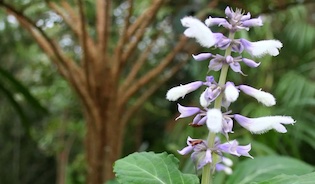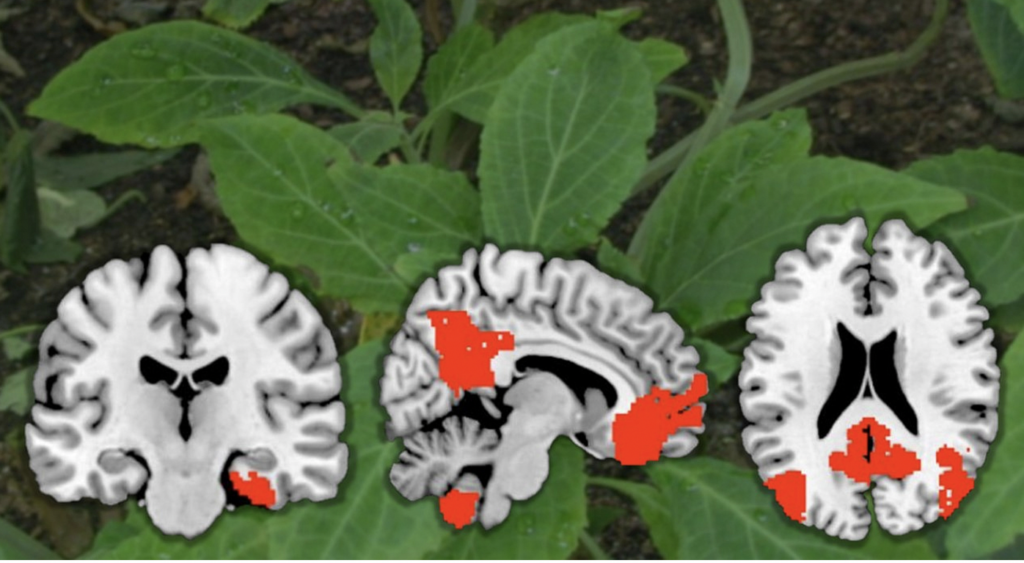Today, psychedelics are enjoyed by a wide range of society — from microdosing mothers, to folks tripping out to escape lockdown — if only to travel in their minds.
Now, you may not be a tribal sage, but maybe you wanna know a bit more about the wide range of vision-inducing substances? Well we’re here to introduce you to another one — Miley Cyrus’ teenage hallucinogen of choice — the Native Mexican drug Salvinorin A (you probably know it as Salvia).
At Johns Hopkins, scientists X-rayed the brains of those who had vaped Salvinorin A . They confirmed that Salvinorin A acted like other psychedelics, such as psilocybin, MDMA, and LSD, by making new connections in the brain.
The researchers then saw exactly what made Salvinorin A so special. It triggered more random, disconnected signals, but in a positive way.
No, the study realized. Salvinorin A is not simply a party drug — it’s nature’s laughing gas!
Nature’s Laughing Gas
Salvinorin A is a hallucinogen, extracted from the plant Salvia divinorum. It gives intense “floating” sensations and a sort of short-term amnesia — much like that of nitrous oxide (or “laughing gas”) at the dentist.

Manoj Doss, Ph.D., postdoctoral research fellow at Johns Hopkins’ Psychedelic and Consciousness Research, said:
“Salvinorin A seems to do all the things that researchers believe happen when other psychedelics (such as LSD and psilocybin) act on the brain.
“The funny thing is that some researchers have selectively focused on the default mode network when that’s not even where they find the strongest effects of classic psychedelics.
“In contrast, that is, in fact, where we found the strongest effects of Salvinorin A.”
Sage and Sages
Like psilocybin, Salvinorin A is derived naturally. It is taken from the sage plant, Salvia Divinorum. When taken by humans, Salvinorin A has a quick onset (or the amount of time it takes to “kick in”). The trip is short, but potent… with out-of-body sensations, hallucinations, and a detachment from reality.
But unlike psilocybin and LSD, Salvinorin A does not interact with serotonin-2A — a receptor in the brain that controls learning, appetite, and other active bodily processes. It actually binds to the kappa-opioid receptor, which reduces dopamine levels. This creates a sensation of dysphoria (thats the opposite of euphoria, so y’know, not good). Due to this, many people say that a salvia trip is difficult to enjoy.
A member of the mint family, Salvia divinorum is historically a favorite of the Mazatec people of Oaxaca, Mexico. For hundreds of years, the psychoactive plant has been taken in rituals by Mazatec sages.
Today, Salvia divinorum can be found everywhere in California – where it has been a legal psychedelic since 2009. Locals munch on S. divinorum as a quid, which is sorta like chewing tobacco. Salvia is also smoked in the tradition of weed, however, due to its predominantly disorientating and unpleasent effects it has never become as widespread as other psychedelics such as psilocybin and LSD.
The Most Potent Natural Hallucinogen

The main agonist (or “tripper”) of Salvia divinorum is Salvinorin A. It also has a very unique chemical structure, unlike other hallucinogens found in nature, such as psilocybin, peyote, and DMT. Salvinorin A is also, of course, different chemically from lab-made hallucinogens — such as LSD and ketamine.
Salvinorin A also “freezes” you in place, especially when inhaled. The effects can be described as a dreamlike, near-death experience.
So how strong is Salvinorin A, really?
When smoked, Salvinorin A is the most potent natural hallucinogen. A single dose in humans (ranging from 200- to 1,000-μg) rivals that of LSD in the way it hits your senses. The trip arrives after 1 minute, and lasts 15 minutes on average.
Blink and you’ll miss it!
Psychedelic Vaping
In the study, participants were told that they would get a pretty high dose of Salvinorin A. Before being given the actual drug, they practiced several times on how to vape, with special instructions: “Lie on your backs, wear eyeshades, and listen to music!”
12 men vaped Salvinorin A crystals, and were scanned right away by fMRI (or functional magnetic resonance imaging) for the next 15 minutes to see how the trip affected their brains.
The researchers used 8 brain networks as a baseline, namely: 3 networks for vision, and 5 others for moving and touch, paying attention, reward, and the “default mode network” (or mind at rest).
Here’s the kicker. You might reasonably expect a “symphony” of all 8 brain networks to happen. After all, Salvinorin A is a psychedelic, right?
But what the scientists found out was that not only did the brain activities pause for the time being, the signals became random & unpredictable.
(Zig-zag. Zig-zag. Wait, is Test Subject No. 9 laughing?)
Potential to Treat Addiction
Despite its clear differences with other “classic” psychedelics, Salvinorin A is still one of the new rockstars of pharma because of its real potential to treat addiction. Ibogaine (a cousin of Salvinorin A) has shown efficacy as a treatment of cocaine and opioid abuse, in a preclinical model.
The researchers will soon begin a new trial to see how Salvinorin A truly compares therapuetically to popular hallucinogenic drugs, such as psilocybin and LSD.
What do you think? Is there a seat at the table of psychedelic medicine for Salvia?
Share your thoughts down below!





